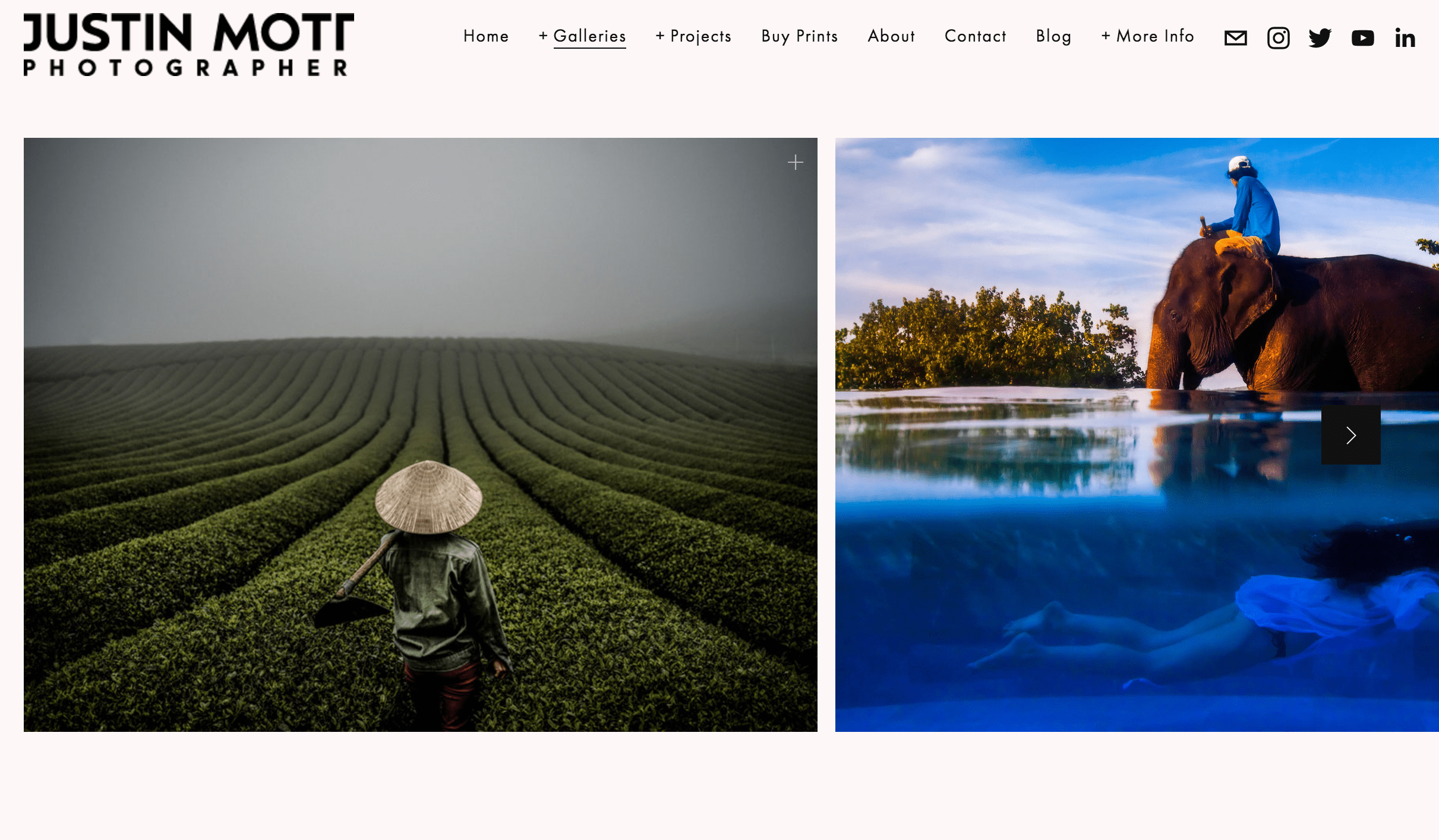What makes a pro a pro? How do you do it, do you just wake up one day and the photo gods anoint you a pro? Do you have to pass the pro photography exam and get some sort of certificate?

Justin Mott studied photojournalism at San Francisco State University where he learned a lot about the technical side of photography, ethics, work ethics, and storytelling. What he didn’t learn much about was the business the side of things. However, he knew in his second year of college that he wanted to be professional photographer, but had no clue how to make that happen. “The industry is constantly changing and universities can only teach you so much. The challenging part isn’t becoming a pro, the hard part is having the confidence to make the leap and make it work,” Just explains. Below, Justin shares his top tips for turning an ambition into a reality.
I made the leap about a decade ago and it hasn’t always been easy but I made it happen the old fashioned way, hard work and persistence. Now I own a commercial photography and video production company, a destination wedding photography business, and I shoot as an editorial photographer as well. When I teach workshops or meet budding photographers at events the most common question I get asked is how to become a pro so I decided to put my advice into an article. Everyone has a different path in their journey from amateur to pro but I hope these tips will help steer you in the right direction.
Tip 1 – Talent Isn’t Everything
I wasn’t the most talented student, but I worked my butt off and stayed committed. Don’t let the narcissist professionals tell you it’s all about talent. Becoming a professional photographer is like anything else, hard work pays off in the end. Make sure you commit to making it work no matter what, through the good photos and the bad, for better or worse.
Tip 2 – Don’t Let Contests Be Your Measuring Stick
Photography contests are a huge business and most of them are purely for them to profit from your entry fee. Don’t measure yourself by how many contests you’ve won, your clients won’t care much about that. I’ve never had a client ask me about contests. Sure, enter them and have fun doing so, but don’t stress if you haven’t won anything.
Tip 3 – Shoot Even When You Aren’t Paid To Shoot
I’m not saying to go out there and work for free but practice and shoot whenever you can. If you want to learn about portrait photography, gather your friends and do portraits of them for fun. Borrow lights if that’s your thing and experiment until figure out how to use them.
Tip 4 – Get A Proper Portfolio Website

A Facebook gallery isn’t a website, a Flickr account isn’t a website, an Instagram account isn’t a website – you get the picture. Your website should have portfolio galleries in your specialties (example; weddings, portraits, products). You need a contact page, and about page, and a simple logo. Of course, having social media accounts is important, but use those outlets to draw attention to your portfolio website where potential clients can see your work and hire you. I use Squarespace, they are super easy to use, very professional customised templates and they won’t break the bank. Another great option is Photoshelter, they are a great resource for business advice and to manage your archive.
Tip 5 – Equipment
Don’t be intimated by photographers with lenses on top of lenses and mounds of gear. Get a simple kit that you can afford. It’s easy to think “Oh if I had that £4K camera I’d be much better. Get better by practicing and learning not by spending. Now I have expensive equipment true, but when I started I shot with one lens and one camera for an entire year’s worth of assignments and I got by just fine. Here is a link to my favourite gear and yes some of it is really expensive but buy what you need and what you can afford.
Tip 6 – Treat Yourself Like A Business
When you first start off you are the head of marketing, sales, accountant, etc. Understand the basics of these positions and apply them to your business. Download basic contracts and invoice templates and customise them as you grow larger.
Tip 7 – Commit
You will have moments when you will be bummed out because of a slow month(s), photographer’s doubt I call it, but stay with it and use that down time to focus on positive things like practicing and learning something new.
Tip 8 – Don’t Be An Ass
This applies to all professionals I suppose, but I feel many photographers can, well, be asses. Don’t be insulted when you get low ball offers or asked to work for free. Let me rephrase that, you can be insulted, just don’t show it and don’t burn bridges. Understand your value, the market, and politely explain (not in condescending way) why your fees are the way they are.
Tip 9 – Don’t Expect It To Be Easy
I’ve met a lot people that get into photography because they are lazy and it sounded better than a 9-5pm job. I said it, writers and photographers are some of the laziest people I know and the ones who get work hustle and have ambition, the ones who don’t are lazy it’s pretty simple. When they aren’t shooting, they are bitching online about other’s work, hanging out in café’s not getting anything done. When I’m not shooting, I’m clocking in and putting in full work days for my business, marketing, sales, research, etc.
Tip 10 – Stack The Odds In Your Favour
For many editorial photographers their personal work/projects is their portfolio. Spend a lot of time on your projects and do them right. If photographer (A) spent 1 week on his personal project and photographer (B) spent 2 years on theirs, photographer (B) has a huge advantage. Most editors aren’t looking at how long you spent shooting your projects, they are looking at the final product and that’s it, so spend time on your project and get it right.
Tip 11 – Crowd Funding
I bet you think I’m going to tell you that this is a great resource. I heard a panel directed at young aspiring photographers teaching them about crowdfunding as a business plan and it upset me, ok, it pissed me off.
Don’t rely on others money to start your career, it’s like asking for donations for a charity and there are people in need a lot more than your friends funding you to travel to Africa to take pictures. Don’t be an ass like I said before, work and save and fund yourself. I get it for Kickstarter and places like that where you are trading special editions of a book, or selling prints, and stuff like that, I just mean don’t make this your only source of income. It’s not sustainable and your friends/family will get sick of funding you to travel around and take pictures.
Tip 12 – Having A Book Doesn’t Make You Good
I see people rush to publish a book as if that solidifies their place as a pro. Anyone can self publish a book, it’s very easy to do. I can go out this afternoon, take selfies of me taking selfies and title it self reflection and have my book published by this evening. Does that make me a pro, does that make me good, no it makes me a narcissistic weirdo. It can be expensive and time consuming to publish your own book so wait until you have a body of work or project that you feel is worthy of a book and then do it right.
Tip 13 – Understand The Market And The Competition
It’s very important to understand the market and your competition, so damn important. Look at the work of photographers in your market, see what they are doing right with their branding, marketing, etc and learn from them. I’m not saying to copy everything they are doing, just use them as a measuring stick for you and your business.
Tip 14 – Make An Announcement To The World
Walk out of your house or apartment right now and scream to the world “I’m a professional photographer!” Ok, don’t do that but rather when you meet people in the real world introduce yourself as a photographer rather than “oh I work in the cooperate world and sometimes I take photos of this , that, and the other thing.” See yourself as a photographer and others will see you the same way. Do the same in the social media world as well.
Tip 15 – Have A Content Strategy
I work with a great content strategist named Brandon Chew. He’s taught my a lot for all my brands and helps me strategise on social content. We think carefully about the purpose and my identity for each social media outlet and how each outlet fits into the brand scheme of our marketing strategy. For example, I use Instagram to tease content that’s on my website, things like that. It’s also important to budget and strategise on how you target and boost posts. Email Brandon if you want to take your business to the next level, his address is here.
Tip 16 – Follow Justin Mott
This last tip is from us at AP, we hope these tips were helpful. Justin runs a fantastic blog full of advice around improving your photography and becoming professional. We would highly recommend you head to Justin’s official blog, follow him on Instagram, and if you’re lucky enough to have access to the channel History Asia, watch Justin and his crew on the Photo Face-Off when it returns for a second season this month. If you have any questions or thoughts please share them in the comments section below.
Author Justin Mott
Since arriving in Vietnam over a decade ago, Justin Mott has established himself as one of the best-known and well respected photographers in Southeast Asia. He has shot over 100 assignments for the New York Times while a collection of his work in Vietnam has been featured on the BBC. Additional major editorial clients include TIME, Forbes, The Wall Street Journal, and The Guardian among many others. His boutique visual production studio Mott Visuals specialises in premium commercial photography and video production. Mott is also familiar to TV viewers as host and resident judge of History Channel’s hit photography reality series Photo Face-Off now entering their 4th Season.







